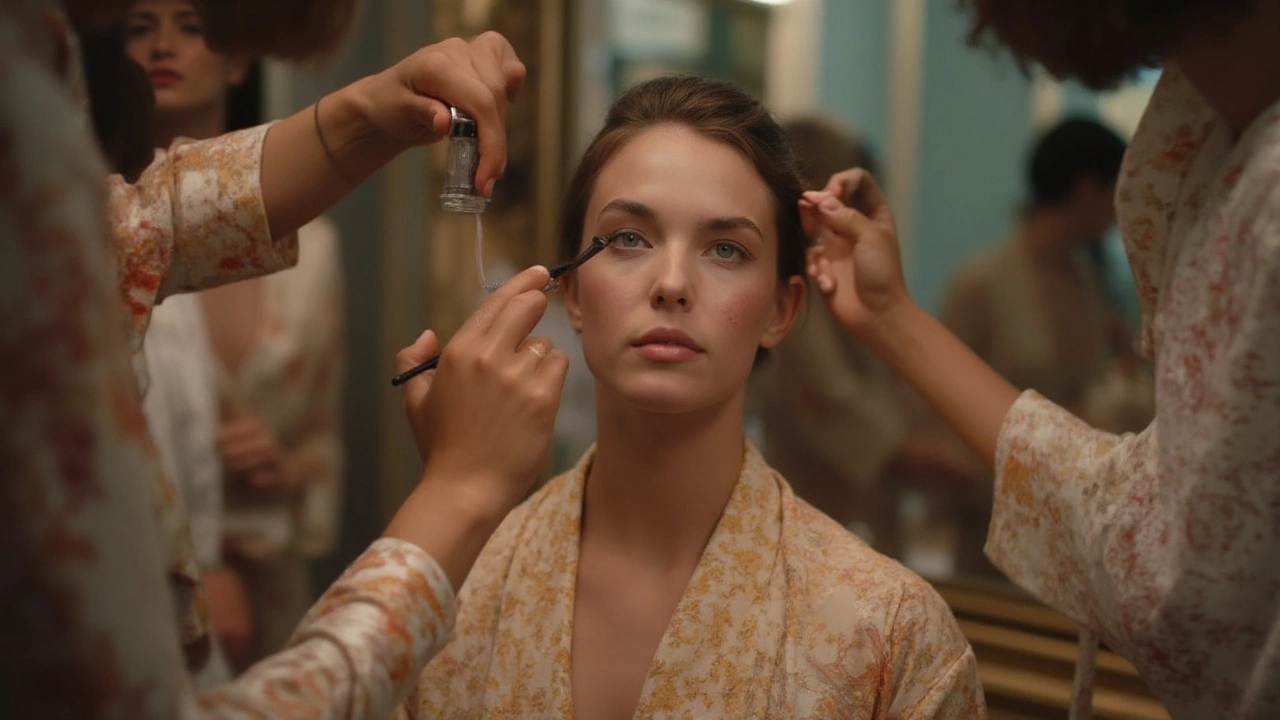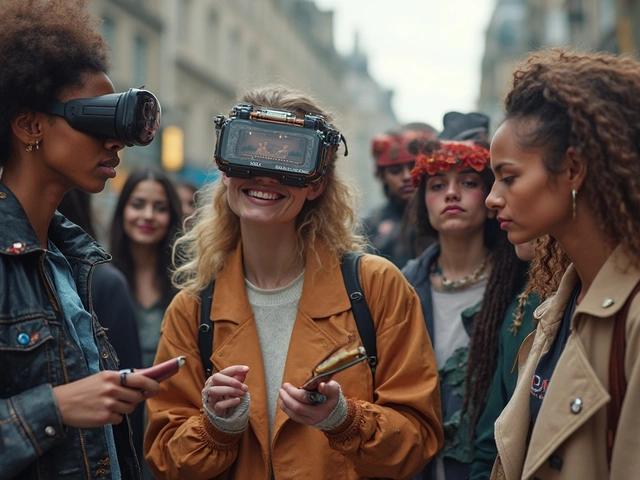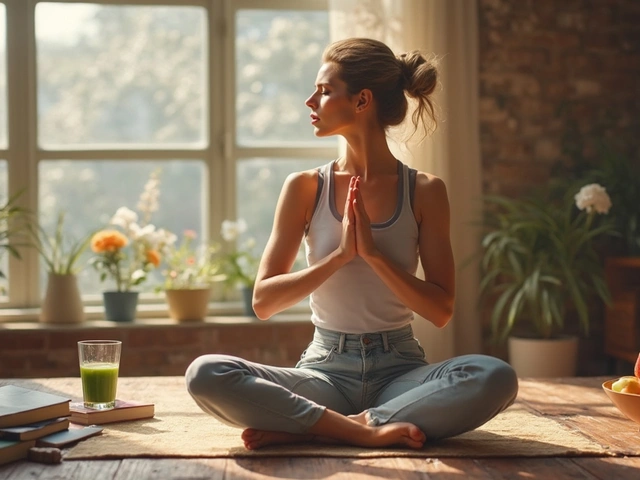Put twenty faces side by side on a runway and all of them seem flawless, glowing, and poreless—but, let’s be honest, not every model started with perfect skin. It’s not magic, it’s maintenance. Scroll Instagram and you’ll catch a model with a sheet mask at 7am before a shoot, and by midnight, she’s double-cleansing backstage. What’s going on behind those perfect faces?
How Models Prep Their Skin—Morning to Night
Start with this: models treat skincare like part of their job. Early in my career, I chatted with a veteran model backstage who whipped out a travel-size bottle of micellar water and said, "I don’t even brush my teeth before I clean my face." That’s dedication. Most models begin the day by rinsing their face with lukewarm water. Hot water is a villain for skin, stripping its natural oils. Quick rinse, pat dry—not rub.
After cleansing, models usually go for a hydrating toner or mist. These aren’t just for fancy vibes; they restore skin’s pH after cleansing and prep it for serums. Serums? Oh, you’ll hear this everywhere: vitamin C serum in the morning is non-negotiable. It helps brighten, defends against pollution, and tackles redness. A study published in the Journal of Clinical and Aesthetic Dermatology found consistent vitamin C use reduced skin dullness in 73% of participants.
Top with moisturizer—light in the morning, richer at night. Here’s where it gets real: SPF is king. Models live in sunscreen. SPF50, rain or shine. During Fashion Week in Paris, a friend of mine said she reapplied every two hours. That’s probably why she landed back in New York looking more glowy than the day she left.
At night, they don’t fall asleep in makeup—not ever. If you think oil cleansers are just marketing fluff, look at models: they swear by double cleansing (oil, then foam/gel) to truly remove makeup, sunscreen, and pollution. Afterward? Hyaluronic acid for hydration, sometimes a retinol or gentle exfoliant (AHA/BHA) a few times a week. Retinol isn’t for everyone, but models who use it say it keeps their skin smooth for longer and helps fight breakouts from heavy studio makeup. Some apply a thin film of Vaseline under their eyes as a gentle overnight slugging hack—another tip that’s started trending on TikTok in the last year.
The Little Habits That Make the Biggest Difference
Alright, skin products get all the attention, but behaviors matter just as much. I’ve seen a lot of models carry their own clean pillowcases to hotels—wild, right? But they swear it helps prevent breakouts. Silk pillowcases let skin glide, keeping friction low and minimizing creases.
Another big one: never touching the face during the day unless necessary. Hands carry everything from subway rails to smartphone bacteria. A 2022 survey from the American Academy of Dermatology reported that people who touched their faces more than 15 times per day were 23% more likely to experience breakouts. Models are stricter about this than school principals at a pencil factory.
Water, water, water. It gets annoying, but hear me out—models track how much water they drink, especially during travel. Cabin air during flights? Totally dry. I met Fiona (my spouse) on a shoot years ago, and she chugged a liter right after landing, then misted her face with thermal water every hour. Result: her skin didn’t flake off like the rest of us. And snacks? It’s not all kale, but models eat berries for antioxidants, nuts for omega-3s, and skip dairy days before a campaign if they know it’s a breakout trigger.
Most skip physical scrubs and go for enzyme or acid exfoliants—gentler, less risk of microtears. Sleeping well is non-negotiable, too. Sloppy sleep = puffy skin, dark circles. To battle bloat and puffiness, jade rolling and ice cubes are part of the morning arsenal. Not every model does this, but almost everyone I’ve known stashes something cool in the fridge. There’s even a backstage trick: popping green tea bags in the fridge, then resting them over the eyes for five minutes to reduce swelling and brighten under-eyes.

Go-To Products and Ingredients Models Actually Use
Want real product names? Look in any model’s tote and you’ll spot Bioderma Sensibio H2O (best for quick makeup removal), La Roche-Posay SPF, and The Ordinary niacinamide drops. For serums, SkinCeuticals C E Ferulic is legendary. Gel moisturizers like Neutrogena Hydro Boost or Embryolisse Lait-Crème Concentré are iconic. Sheet masks? Dr. Jart+ or SK-II if payday is generous. If you catch a model looking extra glowy at 7am, bet there’s a Laneige sleeping mask involved.
Ingredient-wise, models chase after hyaluronic acid, niacinamide (battles redness and acne), ceramides, and squalane to rebuild skin’s natural barrier. They keep retinoids for sensitive nighttime repair—not every night, but often enough. Sunscreen remains the single most used product, and not just on the beach.
Sensitivity is an issue for many models—hours in heavy makeup, shoot lights, weather changes. So, anti-inflammatory ingredients matter: chamomile, calendula, panthenol, and Centella Asiatica all soothe raw skin. Pro tip: watch out for products with high amounts of denatured alcohol or artificial fragrance. They irritate more than they help, especially when your skin barriers are already tired.
Even with all these, models usually stick to 5-7 products in total—not the 20-step routines of beauty influencers. Simplicity matters; the less you pile on, the better your skin knows what to do.
| Common Model Skincare Product | Key Ingredient | Main Benefit |
|---|---|---|
| Bioderma Sensibio H2O | Micelles | Cleanses gently |
| La Roche-Posay Anthelios SPF 50 | Mexoryl SX | Sun protection |
| SkinCeuticals C E Ferulic | Vitamin C, E, Ferulic Acid | Brightens, antioxidant |
| The Ordinary Niacinamide 10% + Zinc 1% | Niacinamide, Zinc PCA | Reduces redness, sebum |
| Neutrogena Hydro Boost | Hyaluronic Acid | Hydrates |
| Laneige Sleeping Mask | Beta-Glucan | Locks in moisture |
Smart Skincare Tips You Can Steal From Models
You don’t have to walk runways or live on jet fuel to copy these routines. First, keep your skin clean—never skip out on removing makeup, and always choose a gentle cleanser over something harsh. Second, use a targeted serum (vitamin C in the morning, hyaluronic acid day or night), and swipe on sunscreen, even if it’s cloudy. Think of sunscreen as your "anti-aging moisturizer"—because nothing ages skin faster than the sun.
Replace your pillowcase every two days if you’re fighting breakouts, or use silk to keep wrinkles at bay. Keep your hands away from your face, and wash them often. Moisturize after you get out of the shower, and don’t wait for skin to feel dry. Hydration helps your skin cells work better—and you’ll notice it in a week if you’re consistent.
Eat foods rich in antioxidants (berries, dark chocolate, leafy greens), and balance with healthy fats from nuts, avocado, or salmon for plumper, smoother skin. Don’t overdo physical scrubs—your skin isn’t a kitchen floor. Stick with gentle exfoliants 2-3 times a week, and try to get enough sleep (7-9 hours, not just wishful thinking) to let your skin repair overnight.
If you wake up puffy, stick a spoon in the fridge and roll it under your eyes. A model backstage told me it works better than most fancy creams, and she looked fresh for an 18-hour shoot. If you need to budget, invest mainly in sunscreen, cleanser, and one good serum—splurging on every new launch isn’t the secret.
Don’t stress over "Instagram-perfect" skin. Remember, models have bad skin days too, and you rarely see them under all those retouching filters and pro lighting. The real model move is to protect, nurture, and respect your skin’s limits. A skincare routine isn’t about chasing trends—it’s about getting to know what works for you, day after day. The result? Skin that looks good in any light, runway or not.





